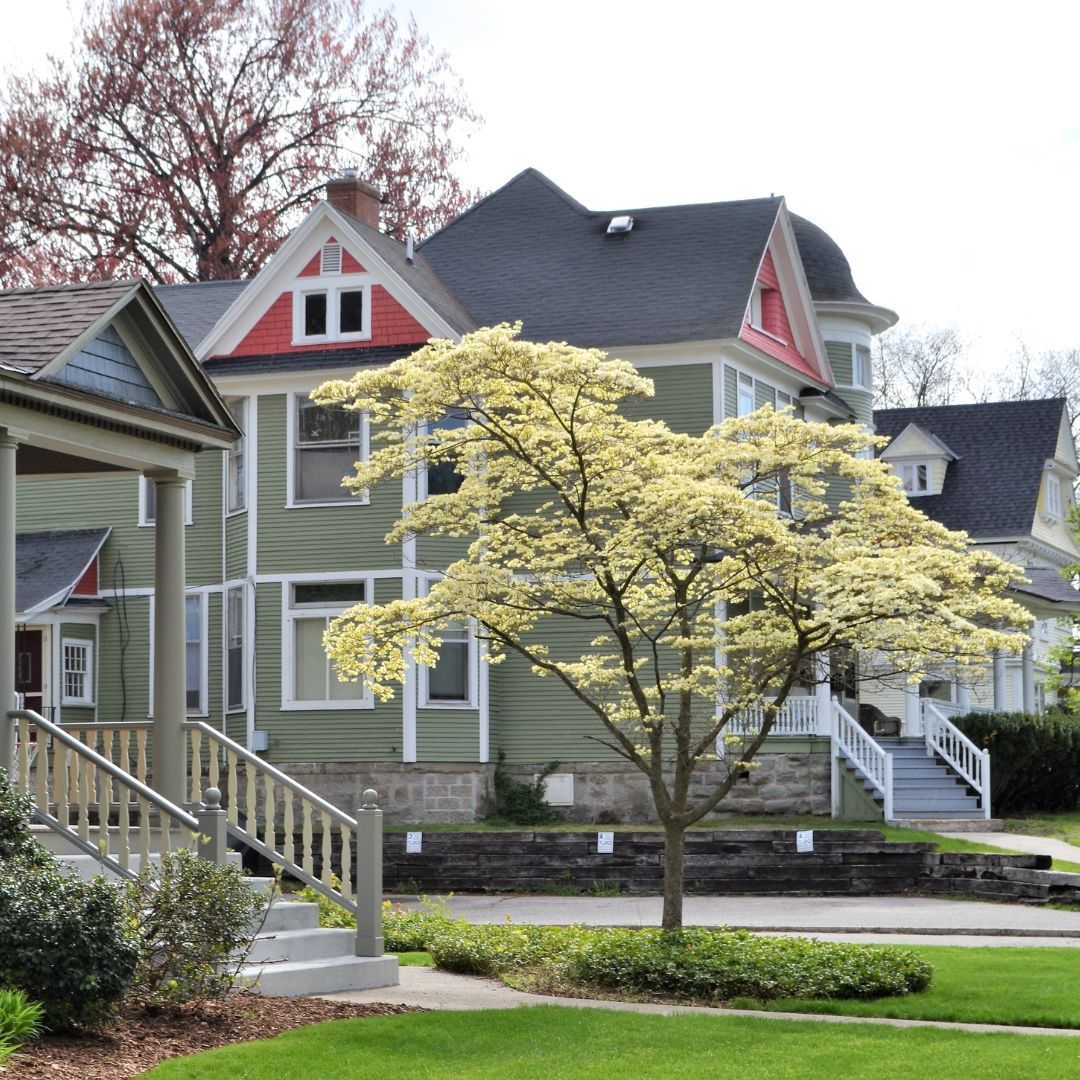Vacant Property Insurance: What to Know Between Tenants
See How We're Different
or call us: 303-834-1001
The days or weeks that pass between one tenant’s move-out date and the next lease signing may feel uneventful, yet the property owner’s risk profile is quietly changing. A building with no occupants is statistically more likely to be vandalized, broken into, or damaged by a slow-developing peril such as water intrusion. Standard landlord or buy-to-let policies often withdraw or limit protection after a set vacancy period, leaving an unexpected gap. Vacant property insurance is designed to fill that gap, safeguarding both the structure and the investment returns that rely on it. The following guide explores what owners, managers, and real-estate investors should understand about this specialized coverage, why it matters, and how to secure an affordable, well-fitted policy.
Understanding Vacant Property Insurance
Vacant property insurance is a short-term policy or endorsement that protects residential or commercial buildings when they are unoccupied for longer than the vacancy allowance in a traditional landlord policy. It can be written for as little as one month and extended up to a year or more, depending on the underwriting appetite of the carrier.
Because the risk characteristics of an empty dwelling differ from those of a lived-in unit, insurers use a separate rating model. While premium rates are typically higher on a daily basis than standard coverage, the owner pays only for the period of vacancy, keeping overall cost manageable.
Definition and Core Purpose
Most carriers define a “vacant” building as one that is entirely devoid of people and personal property necessary for normal occupancy. In that state, small problems can spiral unchecked—pipes burst without being noticed, squatters move in, or a lightning-sparked fire smolders until structural damage is severe. The core purpose of a vacant property policy is to transfer these amplified risks back to the insurer, preserving the asset’s market value and the landlord’s liquidity.
Moreover, vacant property insurance not only safeguards the physical structure but also provides peace of mind to property owners. When a property is left unattended, it becomes vulnerable to a variety of risks, including vandalism and natural disasters. By securing a vacant property policy, owners can rest assured that they have a financial safety net in place, allowing them to focus on other pressing matters, such as renovations, sales, or future tenant placements without the constant worry of unforeseen incidents that could lead to significant financial loss.
How It Differs From Landlord Insurance
Traditional landlord insurance assumes a tenant is present, generating foot traffic that deters crime and provides incidental monitoring. It also presumes heating, ventilation, and security systems are operating every day. Once occupancy stops, those assumptions break down, and coverage for certain perils—particularly theft, malicious mischief, and water damage—may be restricted or excluded outright.
A vacant policy restores or replaces those protections, often with added terms that account for the higher hazard. For example, the carrier may require proof that utilities remain on or that the owner conducts regular inspections. Failure to comply can jeopardize a future claim, so understanding these obligations is critical. Additionally, some insurers may offer optional endorsements that cover specific risks associated with vacancy, such as coverage for lost rental income or liability protection in case of accidents occurring on the property. This flexibility allows property owners to tailor their insurance to their unique situation, ensuring comprehensive protection during periods of vacancy.
Why Vacancy Is a Unique Risk
Empty buildings draw the wrong kind of attention and can deteriorate faster than their occupied counterparts. The U.S. Fire Administration estimates that nearly 20,000 vacant-building fires occur annually, causing more than $600 million in direct property damage. A similar pattern appears in burglary statistics: the National Crime Prevention Council reports that break-ins are up to three times more likely in dwellings without occupants.
Beyond crime and fire, gradual hazards such as mold or roof leaks can quietly take hold. A leak that would have been spotted within hours by a tenant might run for days before anyone notices, leading to costly remediation. Taken together, these factors explain why insurers apply stricter underwriting standards and higher premiums for vacancy periods.
Statistics on Vacant Property Losses
Industry data compiled from Property Claim Services reveals that average claims in vacant structures run 17% higher than in occupied units, primarily because damage is discovered later and spreads further. Water-related losses alone account for 34% of all vacant property claims, with the average payout exceeding $14,000—double the normal figure for an occupied building.
Real-World Examples
Consider a duplex in Cleveland left empty for six weeks while the owner refinished hardwood floors. Copper thieves stripped plumbing from the basement, creating $11,800 in material loss and $9,300 in water damage before a neighbor noticed. The landlord’s standard policy excluded both theft and water escape beyond a 30-day vacancy window, resulting in an uninsured bill of more than $20,000.
By contrast, a Minneapolis investor filed a claim under a vacant property policy after a December cold snap burst a radiator pipe. Because weekly inspections and thermostat records were documented—as required by the carrier—the insurer covered $26,000 in repairs and cleanup, minus a $1,500 deductible. Adhering to policy conditions proved decisive in turning a potential financial hit into a manageable setback.
Moreover, the impact of vacancy extends beyond immediate financial losses; it can also affect property values in the long term. A vacant property often becomes a target for vandalism, which can lead to a decline in neighborhood appeal and, subsequently, property values. Real estate experts note that homes in neighborhoods with high vacancy rates can see their values drop by as much as 20% compared to similar homes in more stable areas. This ripple effect can deter potential buyers and investors, making it even more challenging for property owners to recover their investments.
Additionally, the psychological aspect of vacancy cannot be overlooked. Properties left empty can create a sense of neglect and abandonment in the surrounding community, which can lead to a decrease in local pride and engagement. Residents may feel less inclined to maintain their own properties if they perceive that nearby homes are not being cared for. This can create a vicious cycle where the presence of vacant properties contributes to further vacancies, ultimately destabilizing entire neighborhoods and impacting local economies.
When Does a Property Become “Vacant”?
Definitions vary by carrier, but most landlord policies classify a residence as “vacant” after 30 or 60 consecutive days of no occupancy. At that point, coverage for certain losses may be reduced by a percentage or nullified entirely. A building can also be deemed vacant if the tenant’s belongings are removed, even if rent has not officially terminated.
Vacancy rules matter because a fire on day 31 could be insured differently than one on day 29. Owners must mark calendar dates carefully and communicate with their broker or agent the moment a unit becomes unoccupied. Proactive steps provide time to convert to a vacant property policy without a coverage gap.
Typical Waiting Periods
Thirty-day thresholds dominate the single-family and small multifamily market, while 60-day allowances appear more often in commercial or large-apartment portfolios. Some surplus-lines carriers impose no automatic vacancy clause but instead rate the unit as vacant from day one, potentially offering more flexibility at a higher cost.
Regional Variations
States prone to freeze-thaw cycles, wildfire, or hurricane exposure may see stricter vacancy timelines or mandatory endorsements. For example, insurers in Florida often require windstorm coverage to be rewritten entirely if a dwelling stands empty during the official hurricane season.
What Does Vacant Property Insurance Cover?
A standard vacant policy mirrors many elements of a landlord package but tweaks peril lists and settlement terms. Fire, lightning, wind, hail, and explosion generally remain covered on a named-peril basis. Theft, vandalism, and malicious mischief are frequently included but may carry higher deductibles or sub-limits.
Liability coverage is another key component. Even without tenants, the owner can face lawsuits if a trespasser or contractor is injured on-site. Most vacant policies offer at least $300,000 in personal liability, with $1 million available for minimal added premium.
Standard Inclusions
Inclusions vary, yet a typical policy addresses: structural damage (Coverage A), other structures like detached garages (Coverage B), limited personal property such as appliances (Coverage C), and premises liability (Coverage L). Loss of rent (Coverage D) may be offered if the property was actively listed and expected to produce income once repairs or marketing completed.
Optional Endorsements
Owners may elect endorsements for sewer-backup, ordinance or law, equipment breakdown, or builders-risk if major renovations are underway. These add-ons can be instrumental when vacant periods coincide with capital improvements, as many standard policies exclude damage to materials or systems in the midst of remodeling.
Another increasingly popular option is vacancy permission for certain smart-home devices. Carriers give premium credits when the owner installs professionally monitored leak detectors, thermostats, and security cameras that transmit real-time alerts. The devices not only mitigate loss but also serve as documentation in the event of a claim dispute.
Cost Factors and Premium Benchmarks
While vacancy insurance commands higher rates per day than standard landlord coverage, premiums remain modest relative to potential loss. National surveys conducted by the Insurance Information Institute put the median vacant home policy premium at $80–$135 per month for a mid-sized single-family dwelling, compared with $45–$65 for an occupied landlord policy.
Commercial properties scale upward, often ranging from $0.25 to $0.45 per $100 of insured value per month. The shorter the term, the higher the daily rate, so owners who can estimate the vacancy duration accurately avoid overpaying.
Main Drivers of Price
Key pricing variables include geographic location, age and construction type of the building, local crime score, protection class (distance to a hydrant and fire station), deductible level, and mandated risk-management measures such as alarm systems or monthly inspections.
Average Premium Ranges
A brick townhouse in a suburban fire-protected area may run roughly $900 for a six-month term at $250,000 replacement cost, whereas a wood-frame duplex in an inner-city ZIP code could cost $1,600 for the same term and limit. Deductibles set at $2,500 typically yield 8–12 % savings over a $1,000 deductible.
Reducing Risk and Controlling the Premium
Insurers reward proactive owners. Documented inspections, utility maintenance, and evidence of seasonal preparations reduce both claim frequency and premium outlay. Carriers may discount up to 15 % when the owner signs a vacancy warranty agreeing to weekly walkthroughs or uses a licensed property manager.
Bundling multiple vacant properties with one carrier can produce additional savings through a portfolio endorsement. The administrative ease of a master policy, coupled with shared limits, lowers underwriting expense, and the carrier passes part of that efficiency back to the insured.
Physical Safeguards
Changing door locks, boarding ground-level windows, draining plumbing in winter climates, and installing motion-activated lighting are straightforward steps that insurers note favorably. Security signage and visible camera systems deter opportunistic vandals and often qualify the property for a further price break.
Administrative Strategies
Keeping heat at 55 °F in winter, notifying local police of the vacancy, and placing mail holds prevent tell-tale signs of abandonment. Meticulous record-keeping—inspection logs, dated photographs, and contractor receipts—offers proof of due diligence if a claim adjuster questions whether reasonable care was taken.
Claims: Documentation and Process
Reporting requirements under a vacant policy mirror standard property claims but place heightened emphasis on inspection records and security measures. Insurers can deny or reduce payments if they find that mandated steps, such as maintaining utilities, were ignored.
Timeliness also matters. Most policies require notification “as soon as practicable,” typically within 72 hours. Fast reporting expedites investigation, limits secondary damage, and demonstrates good-faith cooperation—factors that smooth the path to settlement.
Preventing Disputes
Thorough evidence collection mitigates the likelihood of conflict. Photograph damage from multiple angles, secure police or fire reports, and preserve any damaged property until the adjuster inspects. Written logs from monitoring services, temperature sensors, or leak detectors add credibility to the chronology of events.
Responding to a Loss Event
After ensuring safety, the owner should stop further damage—shutting off water, boarding windows, or hiring emergency mitigation services. Many vacant policies reimburse reasonable steps taken to protect property after a covered loss, so retain invoices. Officially tender the claim via the carrier’s hotline or online portal, then follow up in writing for documentation.
Choosing a Policy and Carrier
Because vacant coverage taps a narrower slice of the market, some mainstream insurers do not underwrite it directly, instead placing business with a specialty or surplus-lines carrier. Comparing quotes through an independent agent knowledgeable in real-estate investment insurance broadens the field and reveals program nuances.
Look beyond premium alone. Claim responsiveness, financial strength ratings from AM Best or Standard & Poor’s, and the clarity of policy language all influence the ultimate value. An inexpensive policy that stalls or denies payment when needed can cost far more than a slightly higher premium for comprehensive coverage.
Questions to Ask the Broker
• What is the exact vacancy definition and grace period?
• Which perils are excluded or sub-limited?
• Are theft, vandalism, or malicious mischief fully covered, and under what conditions?
• Does the policy mandate periodic inspections, and how should they be documented?
• How are partial vacancies handled if one unit in a multi-family building remains occupied?
• Can the policy convert back to standard landlord coverage once a lease is signed without a new application?
Clear answers on these points prevent unpleasant surprises and ensure the policy aligns with operational realities.
Key Takeaways for Landlords
Vacancy may be a routine phase in property management, yet it changes the insurance equation in ways that standard landlord policies often overlook. Recognizing the precise moment coverage limitations kick in—and acting to secure a vacant property endorsement or standalone policy—protects against high-severity losses that could erode profitability or breach lender requirements.
Landlords who stay ahead of the curve by incorporating vacancy insurance into their budgeting and risk-management plans demonstrate professionalism, attract favorable lending terms, and ultimately safeguard the long-term viability of their real-estate portfolios.













